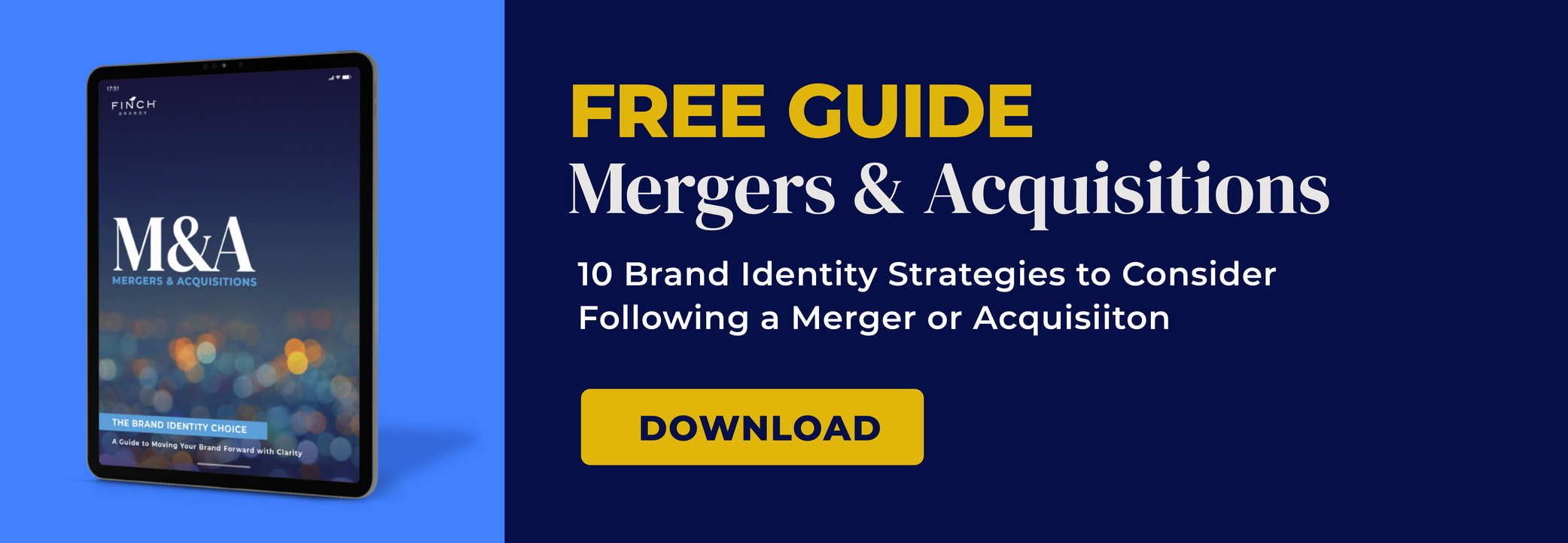Why the Best Post-M&A Brands Are Built from the Inside Out

Any company that sets out to build a brand knows the only way to be successful is to first win the hearts and minds of employees. Now, imagine how much more difficult the challenge becomes in an M&A setting where you are expected to unite a mix of employees from multiple companies, all coming from different emotional places. The high wire just got higher.
M&A is perhaps the most emotionally charged change moment any company can face. Especially during times of uncertainty or volatility. The M&A integration process can lead to increases in levels of stress, anxiety, fear, and a sense of instability. How you engage employees can directly influence your ultimate success. In other words, HOW you communicate to your audiences is just as important as WHAT you communicate to them.
We’ve seen communications influence how confident internal and external stakeholders are with the organization’s decisions. Yet, most companies struggle to build empathy into their communications or even make it a part of the employee engagement journey.
Make employees the center of your attention
The brand decisions you make during the M&A process send signals to stakeholders and set expectations. While brand architecture focuses on how the business will be organized in the marketplace, brand integration largely focuses on how people will fit into the new organization.
It’s natural for employees to have important questions that need to be answered in a timely way. Employees from both sides of an M&A naturally want to know what direction the new entity is headed, what is changing and what’s staying the same, and, of course, how employees will fit into the entity’s future plans. How a company responds to these questions is critically important.
The M&A integration journey is different for everyone
Understanding the stages that employees go through in the M&A brand integration process and when they go through them is important. Teammates, and often customers, are at different locations along their engagement journey and must be engaged differently at different times in slightly different ways. We must approach their needs in a disciplined manner and treat people as individuals. If this process is mishandled, it could result in negative impacts in morale, culture, customer service and revenue.
Experience has shown us that team members from both current and acquired companies should be welcomed into the process, regardless of the structure of the deal, and also be considered a key target audience for process outputs.
How to turn insights and emotions into momentum
Customer-facing team members see the brand through the clearest lens and can help leadership understand reputational factors germane to decision-making. Often, companies involved in an M&A integration process were previously competitors. This brings a valuable, practical perspective to brand equity and the strengths and weaknesses of brands in the deal.
Emotions play a significant role in a change of this magnitude. Engaging employees in understanding and empathetic ways and making them part of the process makes them feel valued and demonstrates a strong sense of transparency.
At Finch Brands, we’ve been a part of dozens of M&A scenarios over the years, providing expert perspective, counsel, and direction in aspects of M&A brand integration and beyond. We’ve seen the value of building M&A brands from the inside out and have codified the insights we’ve gathered into six ways of approaching employee communication:

1. Be honest and transparent. (Keep it real!)
One of the best signals a company can send employees is to trust them with the information they need to know. “Kumbaya” or fluffy moments can do more harm than good. Managing change has to inject a sense of reality into the conversation or it feels shallow, hollow, or fake.
It’s important that you give employees respect and the benefit of the doubt that they can handle the information you give them. Managers should share as much information as they can, and trust that this will allay some of the fear or anxiety employees are feeling and, at the same time, help them feel empowered.
2. Communicate early and often along the employee journey
Studies show that early and continuous communication is seen as the most important step to encourage employees to connect emotionally to the new entity. Understanding the employee journey and when employees need to know the right information can do a lot of the heavy lifting.
Keeping employees informed means keeping the lines of communication open. In addition to holding regular team meetings and one-on-ones to provide news and updates, consider creating a shareable document that outlines expected changes and a timeframe of when they’ll be happening. A clear plan that gives employees a better picture of what the “new normal” is expected to look like and serves as a handy reference to guide employees through any gray areas that may occur.
3. Think guardrails, not mandates
Design your integration process with the goal of empowering employees to be collaborative and communicative. While it’s smart to be prescriptive in the fundamentals around timing, deliverables and things like quality assurance and continuity, flexibility should be encouraged in the ways that help get work done.
A company can rely on traditional methods for integrating areas such as finance or compliance, but for more customer-focused roles, you could invite employees to use more open or agile approaches. This will help keep innovation and customer experience top of mind during the integration process.
4. Leading by listening
Leaders who really listen to employees are able to create an environment of trust during integration. Human nature tells us that someone who hears us is more likely to understand us and ultimately will be more likely to help us. You could imagine someone who has not been a part of the decision-making process over the course of weeks or months will need time to absorb and process things and will want an opportunity to ask questions.
Everyone processes new information differently, which means giving people what they need in the form of time, space, additional information, or an opportunity to be heard.
5. Be respectful of the past yet excited about the future
Any M&A migration has to balance the notions of “what has been achieved to this point” and “what will happen from here.” It can be a delicate dance but one that needs to be carefully navigated with all of the parties in mind. Leaders need to figure out how to respect the company legacy as you build bonds between employees and the new organization.
Maintaining faith in the future in conversations is critical to help focus on the positive. Employees may resist integration if they feel the company they love is going away completely or you’re walking away from its legacy. The ultimate goal is to reinforce the belief that you’re growing something better.
6. Connect with compassion
Studies show that 73% of people consider “wellness” to be an integral part of brand strategy. But only one in six people feels highly connected on a human level at work. This tells us that if you want to reduce the fear and anxiety of employees, your M&A brand integration needs to have compassion integrated into it. Employees want to feel empowered and heard. Customers want to feel understood. While it’s possible to recover from a technical misstep in an integration, it’s much more difficult to smooth over anything that negatively impacts people.
One more thing to consider is the changing corporate culture that now exists. Gen X and Gen Y are unlikely to remain in an organization that doesn’t connect with them on an emotional level or demonstrate a deeper understanding of them as individuals. We find that companies that do not articulate a clear sense of purpose around an integration run the risk of alienating employees.
Buy-in happens from the bottom up
Experts agree that employee buy-in significantly impacts your chances of success. The integration of people and culture is critical to the process but does not happen on its own. It needs to be cultivated by knowledgeable experts who can guide the process from beginning to end.
A study by M&A analytics firm, Mergermarket reveals 93% of respondents say that the time taken for an employee to feel emotionally attached to their new organization has a significant impact on the ease of integration and level of synergies.
If you’re working through an M&A moment, Finch Brands would like to help you navigate the journey and ensure that you’re building your brand from the inside out.
Finch Brands is a real-world brand consultancy, specializing in insights, strategy, and design with a focus on guiding successful M&As across a diverse set of industries. We help brands win when it matters most by providing the right tools, frameworks, and practices to help you own the change moment.
FINCH BRANDS | OWN THE CHANGE MOMENT







